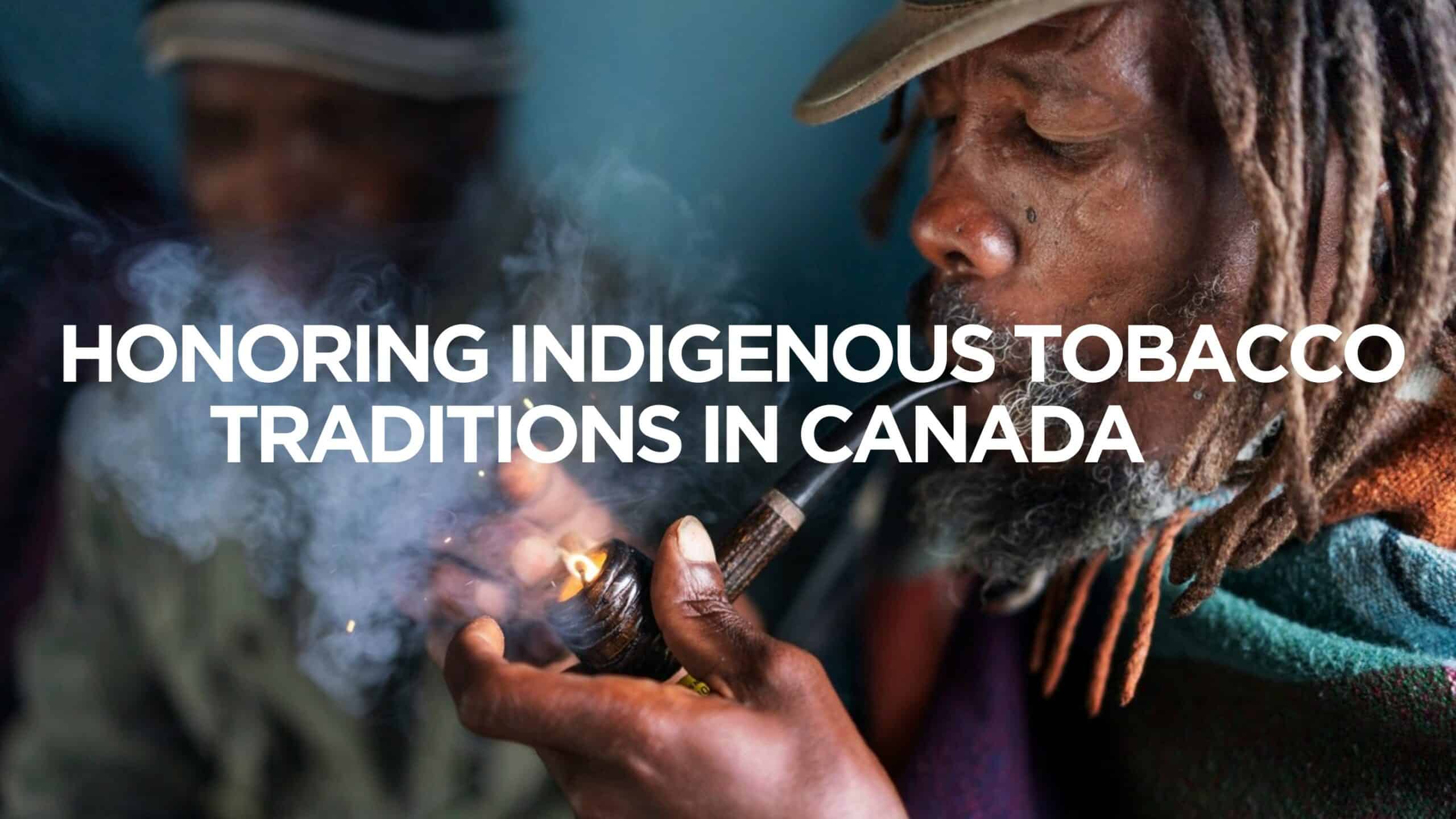Celebrating the Sacred Smoke and Honoring Indigenous Tobacco Traditions in Canada, tobacco holds deep cultural and historical significance among Indigenous peoples. For centuries, tobacco has played a vital role in spiritual ceremonies, cultural practices, and community gatherings. Indigenous tobacco, distinct from commercial cigarettes, is revered as a sacred plant, believed to facilitate communication with spirits, offer protection, and promote healing. Its use is deeply ingrained in Indigenous traditions and ceremonies, symbolizing respect, gratitude, and connection to the natural world.
Honoring Indigenous Tobacco Use in Canada
While the introduction of commercial tobacco products has brought challenges, including higher smoking rates and health disparities within Indigenous communities, it’s crucial to recognize and honor the cultural legacy of Indigenous tobacco use. Efforts to address smoking-related health disparities must consider the complex intersection of culture, history, and health. By acknowledging the sacred role of tobacco in Indigenous culture and history, we can foster understanding and respect while working towards healthier outcomes for Indigenous communities.
In this blog, we’ll explore the rich history and cultural significance of Indigenous tobacco use in Canada, as well as efforts to promote smoking cessation programs tailored to Indigenous values and traditions. Through collaboration and respect for Indigenous knowledge, we can strive for a future where tobacco use is balanced with cultural preservation and improved health outcomes for all.
The Journey of Indigenous Tobacco Use in Canada
Indigenous tobacco use in Canada predates European colonization, with tobacco being considered a sacred plant used for various ceremonial purposes. Tobacco was believed to facilitate communication with spirits, offer protection, and promote healing. Traditional tobacco, often grown and harvested by Indigenous communities, differs significantly from commercial cigarettes, containing fewer additives and chemicals.
However, the introduction of commercial tobacco products has had detrimental effects on Indigenous communities, contributing to higher smoking rates and health disparities compared to the general population. Recognizing these challenges, there have been efforts to promote smoking cessation programs tailored to Indigenous cultural values and traditions. Additionally, initiatives focus on empowering Indigenous communities to regain control over tobacco production and distribution, promoting healthier alternatives while respecting cultural practices.
Conclusion
The cultural legacy of Indigenous tobacco use in Canada is a story of reverence, resilience, and adaptation. Despite the challenges posed by the introduction of commercial tobacco products, Indigenous communities have continued to honor and preserve their traditional tobacco practices, rooted in spirituality and connection to the land. The sacred smoke remains an integral part of Indigenous ceremonies, symbolizing respect for ancestors, gratitude for the gifts of the earth, and a profound understanding of the interconnectedness of all living beings.
Efforts to address smoking-related health disparities within Indigenous communities must be approached with sensitivity and cultural understanding. By empowering Indigenous voices and supporting community-led initiatives, we can create tailored smoking cessation programs that respect traditional practices and values. Furthermore, initiatives aimed at reclaiming control over tobacco production and distribution offer promising pathways towards promoting healthier alternatives and reducing the prevalence of commercial cigarettes.
As we navigate the complexities of tobacco use in Canada, it’s essential to recognize the importance of cultural preservation alongside efforts to improve public health outcomes. By fostering collaboration, respect, and dialogue, we can work towards a future where Indigenous tobacco traditions are celebrated and upheld, and where all individuals have access to culturally appropriate resources for tobacco cessation and wellness. Together, let us honor the sacred smoke and strive for healthier, more equitable communities for generations to come.
FAQ
1. Is traditional Indigenous tobacco the same as commercial cigarettes?
Traditional Indigenous tobacco differs from commercial cigarettes, as it is often grown and harvested by Indigenous communities and used for ceremonial purposes rather than recreational smoking.
2. How are Indigenous communities addressing smoking-related health disparities?
Indigenous communities are implementing culturally sensitive smoking cessation programs and initiatives focused on promoting healthier alternatives to commercial tobacco while respecting traditional practices.
3. What role does tobacco play in Indigenous culture?
Tobacco holds spiritual and ceremonial significance in Indigenous culture, being used for prayer, healing, and communication with ancestors and spirits.

